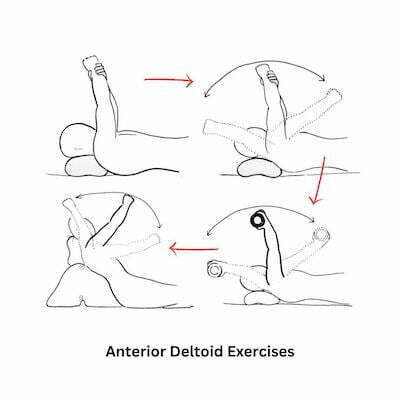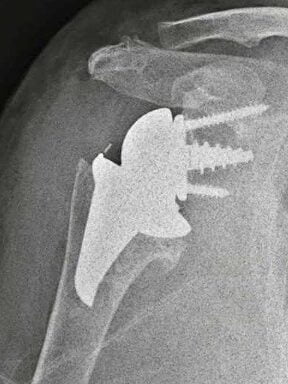Georgios Panagopoulos MD | Orthopaedic Surgeon

Η αρθρίτιδα ώμου είναι η φθορά της άρθρωσης του ώμου και του αρθρικού χόνδρου. Οι πιο συχνές μορφές είναι η οστεοαρθρίτιδα και η αρθροπάθεια του στροφικού πετάλου. Σε περίπτωση που η συντηρητική θεραπεία αποτύχει, η χειρουργική αντιμετώπιση της αρθρίτιδας του ώμου μπορεί να περιλαμβάνει αρθροσκόπηση σε ήπιες περιπτώσεις, ή αρθροπλαστική για πιο προχωρημένη νόσο.
Table of contents
What is shoulder arthritis?

Shoulder arthritis is an inflammation of your shoulder joint. In can occur in the main joint in your shoulder, the ball-and-socket (glenohumeral joint), or a second small joint where your shoulder blade meets your collarbone (acromioclavicular joint). Arthritis can be a source of debilitant pain and prevent you from using your arm. Arthritis also affects the cartilage, the smooth substance that allows your bones to glide against each other. With time, arthritis leads to cartilage loss. Bones do not have this protective cushion anymore and rub directly against each other.
What causes shoulder arthritis?
There are many different types of shoulder arthritis:
- Osteoarthritis: this is the common one. It is the regular “wear and tear” that people get on their hips and knee. This is the usual age-related joint disease.
- Cuff arthropathy: this is also very common. Is occurs in patients with long-standing rotator cuff tears. The shoulder joint loses its regular balance, the arm bone moves upwards and rubs against the shoulder blade, causing accelerated damage and deformity.
- Rheumatoid arthritis ώμου: είναι ένα αυτοάνοσο νόσημα, όπου η ίδια η άμυνα του οργανισμού – το ανοσοποιητικό σύστημα, επιτίθεται στον χόνδρο της άρθρωσης.
- Post-traumatic arthritis ώμου: εμφανίζεται σε ασθενείς μετά από τραυματισμό, όπως προγενέστερα κατάγματα, ή εξάρθρημα.

What are the symptoms of shoulder arthritis?
Shoulder arthritis occurs in people over their 50s, in the majority of cases. However, it can occur earlier in patients with previous trauma, infection or rheumatoid arthritis. Symptoms of shoulder arthritis may include the following:
- Severe pain
- Stiffness and reduced range of motion
- Νυχτερινός πόνος, που ξυπνάει τον ασθενή
- Grinding and cracking as bones rub against each other (crepitus)

Diagnosis
The diagnostic process starts with a detailed history and physical exam. Shoulder arthritis is usually evident in shoulder x-rays, unless in a very early stage. More advanced imaging is commonly requested for surgical planning. Dr Panagopoulos may request a CT scan to evaluate the condition of your bones (bone stock). An MRI scan may also be needed to assess the state of your rotator cuff muscles.
Conservative treatment
Conservative treatment for shoulder arthritis may include:
- Rest
- Activity/lifestyle modification: avoid activities that cause shoulder pain or work around it
- Physiotherapy & a home exercise program: by strengthening your muscles, especially your deltoid, you may find a new balance in everyday activities and reduce pain
- Steroid injection(s): Cortisone reduces inflammation and reduces pain. It may give you relief for a few months or provide you with a leeway if want to push back or avoid surgery for the time being.
Physiotherapy & exercises for arthritis
If you suffer from shoulder arthritis, it's important to stretch and strengthen your shoulder muscles, to improve balance and force distribution. The following exercises can make you stronger and more flexible, making the activities of daily living easier. Remember: exercises should not be painful. If so stop and contact your doctor.
Some simple exercises can improve pain and make you feel better:
- ANterior elevations for deltoid strengthening
- Wall crawls
- Table slides
- Pendulums
- Sleeper stretches


Surgical Treatment
If conservative treatment fails, the next step up is surgery. Surgical options for shoulder arthritis include:
- Arthroscopy: η αρθροσκόπηση μπορεί να προσφέρει πολύ καλά αποτελέσματα σε επιλεγμένες περιπτώσεις, ιδίως σε ασθενείς με αρθρίτιδα αρχικού σταδίου. Η αρθροσκόπηση (CAM procedure, ή comprehensive arthroscopic management) γίνεται με 2-3 μικρές οπές 4 χιλιοστών, μέσω των οποίων ο χειρουργός εισάγει μια μικρή camera και ειδικά εργαλεία. Η επέμβαση περιλαμβάνει λείανση των οστεοφύτων, απελευθέρωση του αρθρικού θυλάκου, ακρωμιοπλαστική, ομαλοποίηση των εκφυλισμένων αρθρικών επιφανειών, καθώς και αντιμετώπιση συνοδών κακώσεων, όπως οι ρήξεις των στροφικού πετάλου. Το χειρουργείο γίνεται υπό γενική +/- περιοχική αναισθησία. Είναι χειρουργείο ημέρας και ο ασθενής μπορεί να γυρίσει σπίτι αυθημερόν, εφόσον το επιθυμεί. Η αρθροσκοπική αντιμετώπιση μπορεί να προσφέρει βελτίωση του πόνου και της κινητικότητας του ώμου, καθυστερώντας την ανάγκη για αρθροπλαστική ακόμα και για αρκετά χρόνια. Η αρθροσκόπηση δεν ενδείκνυται σε περίπτωση προχωρημένης οστεοαρθρίτιδας.
- Arthroplasty: περιλαμβάνει την αντικατάσταση των φθαρμένων οστικών επιφανειών με μεταλλικές προθέσεις. Η αρθροπλαστική ενδείκνυται στις περιπτώσεις που η συντηρητική θεραπεία έχει αποτύχει και συμβάλλει στην ελαχιστοποίηση του πόνου και στην αύξηση του εύρους κίνησης του ώμου. Η επέμβαση πραγματοποιείται με συνδυασμό γενικής και περιοχικής αναισθησίας και απαιτεί συνήθως νοσηλεία μίας ημέρας. Υπάρχουν 2 κύριοι τύποι αρθροπλαστικής ώμου. Η Ανατομική Αρθροπλαστική Ώμου περιλαμβάνει την αντικατάσταση της κεφαλής του βραχιονίου με μεταλλική πρόθεση και την αντικατάσταση της ωμογλήνης με πλαστική πρόθεση. Η ανατομική αρθροπλαστική γίνεται σε νεότερους ασθενείς με ακέραιο στροφικό πέταλο. Η Ανάστροφη Αρθροπλαστική Ώμου πραγματοποιείται σε ασθενείς με σημαντικές ρήξεις στροφικού πετάλου και σε μεγαλύτερους σε ηλικία ασθενείς. Στην ανάστροφη αρθροπλαστική, η κεφαλή και η κοίλη επιφάνεια («κούπα») τοποθετούνται αντίστροφα από το φυσιολογικό (κοίλη επιφάνεια στην κεφαλή του βραχιονίου και γληνόσφαιρα στην ωμογλήνη). Η επέμβαση είναι πολύ επιτυχημένη και έχει γίνει εξαιρετικά δημοφιλής παγκοσμίως τα τελευταία χρόνια, με τα αποτελέσματα να είναι πολύ ενθαρρυντικά.



Dr. Panagopoulos has extensive experience in both arthroscopic and shoulder replacement surgery and will discuss all options with you during your visit in the office.
FAQs - Frequently Asked Questions
What is shoulder arthritis?
Shoulder arthritis is an inflammation of your shoulder joint. Arthritis affects the cartilage, the smooth substance that allows your bones to glide against each other. With time, arthritis leads to cartilage loss. Bones do not have this protective cushion anymore and rub directly against each other.
Which are the common types of shoulder arthritis?
– Osteoarthritis
– Αρθροπάθεια στροφικού πετάλου (cuff arthropathy)
– Μετατραυματική αρθρίτιδα
– Ρευματοειδής αρθρίτιδα
What does the diagnosis involve?
– History & clinical exam
– X-rays
– Ultrasound
– MRI
Which are the surgical options?
– Shoulder arthroscopy, for early stage arthritis
– Total shoulder arthroplasty, for isolated arthritis with intact cuff & in younger patients
– Reverse shoulder arthroplasty for all other cases
Can physiotherapy help?
Physiotherapy and a home exercise program can definitely make you feel better and are worth a try before considering more aggressive options.
Find us
Book an appointment with us today
